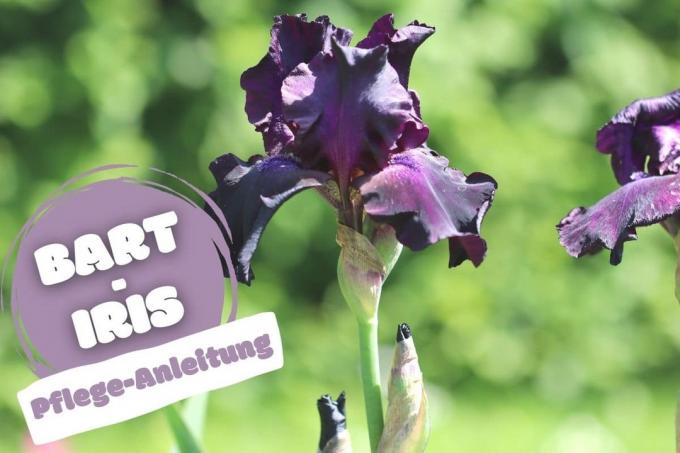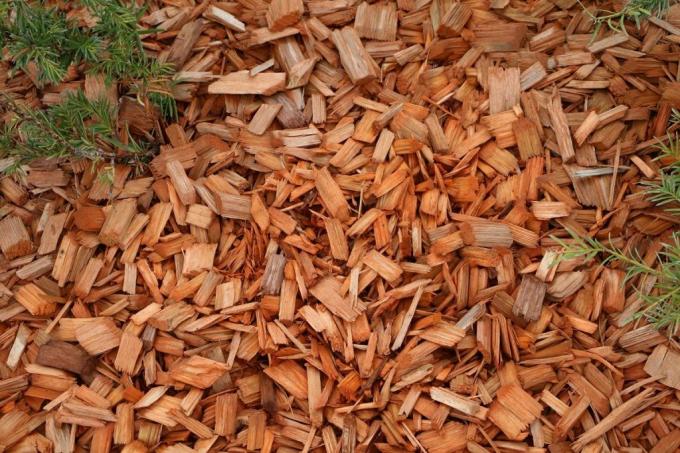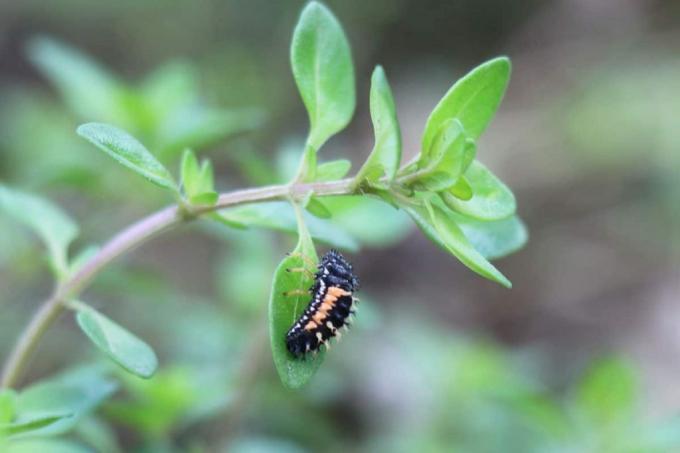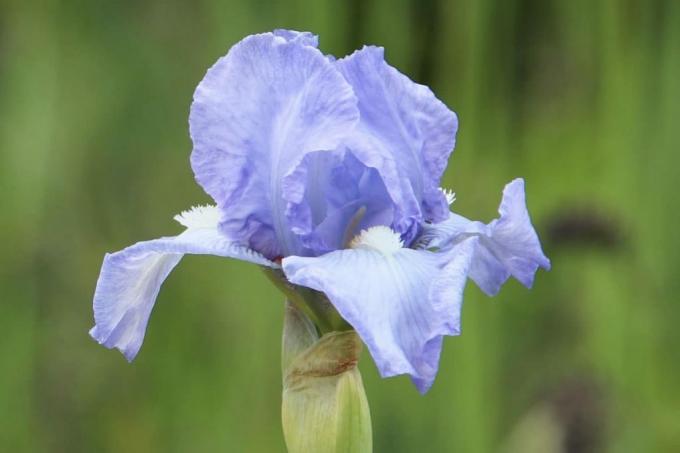
table of contents
- Flowering and flowering period
- Soil condition and location
- Fertilizing and watering
- Diseases and pests
- plants
- Bucket keeping
- Cut
- Overwinter
- Repot
- Multiply
- frequently asked Questions
Profile and care information open +conclude -
- Flower color
- yellow, multicolored, orange, red, violet, white, blue
- Location
- Partial shade, sunny
- Heyday
- April, May, June, July, August, September, October
- Growth habit
- upright, perennial
- height
- up to 40 centimeters (low varieties), up to 120 cm (high varieties)
- Soil type
- loamy, gritty
- Soil moisture
- moderately dry, fresh
- PH value
- neutral, weakly alkaline, alkaline
- Limescale tolerance
- Calcium tolerant
- humus
- rich in humus
- Poisonous
- no
- Plant families
- Iris family, Iridaceae
- Plant species
- Bedding plants, border flowers, cut flowers
- Garden style
- Cottage garden, flower garden, rock garden
There are high (Iris Barbata-Elatior) and low (Iris barbata-nana) varieties of the decorative beard iris (Iris barbata). However, the relatively simple maintenance looks similar for the different types of bearded iris. Instructions are given in the following article.
Flowering and flowering period
Some varieties of bearded iris bloom in April and May and therefore belong to the early bloomers. Later varieties, especially the tall ones, do not show their flowers until summer. But possibly until autumn. The colors can vary greatly:
- multicolored
- from red to orange to yellow
- blue and purple
- White
- Flower shape always the same
- pointed and sword-shaped
- always as a single flower
- a typical beard usually has a different color than the flower

Soil condition and location
Iris barbata makes certain demands on the soil in its care. Because in its usual environment it grows on rubble and stones. Therefore, the soil should also be loamy to gravelly so that the plant feels really good. A rock garden in the front yard is even the perfect location:
- sunny to partially shaded location
- A sunny front yard is ideal
- in a pot on a south-facing balcony
- Bucket in the sunny entrance
- on a sunny terrace
- in the garden bed in front of the wall
- so the tall varieties are sheltered from the wind
- Well-drained and slightly calcareous soil
- fresh and nutritious
- none Bark mulch to use
Tip: The sunnier you choose the location, the more flowers you can look forward to.
Fertilizing and watering
So that the bearded iris can shine in full bloom every year, it needs fertilization before it sprouts in early spring. For this purpose, complete fertilizers containing potash and phosphorus can be used from the trade, alternatively compost is also recommended, which is carefully tucked under around the plants. The following instructions should also be observed when pouring:

- doesn't need a lot of extra water
- naturally falling rain is usually sufficient
- in very dry times it can be poured
- Container plants should always be watered
- but more economical than too much
- Let the tubers dry briefly in between
- otherwise could be lazy
Note: So that the water can drain well, gravel should be mixed in with the garden soil if the bearded iris is not cultivated in a rock garden.
Diseases and pests
There are hardly any known diseases in Iris barbata. However, poor care can occasionally cause the roots to rot. Then the entire plant must be disposed of so that the rot does not spread to the other plants in the bed or pot. In addition, care should be taken to ensure that the soil is permeable and that no further waterlogging can occur. In such a case, the remaining plants should not receive any water for the next time and should dry off first. On the other hand, pests can occur:
- Voles
- Place the tubers in appropriate grids in the earth
- Snails
- Put on screw barriers
- Hedgehogs offer shelter in the garden
- prefer to eat snails
- Aphids
- Rinse with a hard water jet
- Use beneficial insects from the trade

Tip: In well-stocked specialist shops or on the Internet Ladybug larvae or lacewing larvae that help minimize aphid infestation as they feed on it. A near-natural garden with lots of birds can also help against aphids.
plants
The bearded iris is placed in the ground as a tuber and over time forms rhizomes and thus spreads by itself. So that there is enough space for this, the first tubers of the plants should not be placed too close together in the bed or in the tub. Before planting and if compost is to be used in the garden bed, it is advisable to work it into the soil one to two months beforehand:
- best time in summer
- between June and September
- can still grow before the cold in winter
- Put tubers in holes
- cover only lightly with soil
- under no circumstances mulch
- Tubers need enough "air" to dry off
- water lightly
Tip: If you forgot to plant your Iris barbata in the flower bed in summer, you can alternatively, do it in late winter until early spring, when the ground is no longer frozen is. It is then also ideal to put the tubers in a pot over the winter and then plant them in the bed in spring.
Bucket keeping
If there is no garden bed available or if the plants should find a place on the terrace, then the bearded iris is also suitable for cultivation in the tub. Above all, this should be chosen wide enough, as the tubers spread out in all directions here as well:

- Mix garden soil with gravel and compost
- alternatively loose potting soil from the trade
- Drainage from potsherds or balls via a drain hole
- plant fleece over this
- then fill in soil
- Put tubers only on top of the earth
- give up a light layer of earth
- pour on
Cut
There is no need to trim the beard iris for grooming. However, it makes more sense for the optics to separate the faded flowers with the stem at the base. If the leaves turn yellow shortly before winter, they should simply be peeled off. The plant will sprout again on its own next spring.
Overwinter
The bulbs of the bearded iris that remain in the ground are absolutely hardy. The upper parts die off before winter and can be disposed of. Mulching should also be avoided in the garden bed because of the waterlogging. Buckets are pushed under a roof so that no rain can fall in and damage from moisture can occur. Nevertheless, in very dry winters, a little water should be given every now and then, even with potted plants, so that the tubers do not dry out completely.

Repot
If too many offshoots have formed in the pot, then these should be divided. Since all tubers are removed for this, as well as from the garden bed, fresh new soil can be used to fill the pot. Fresh soil should be used every two years, especially for potted plants:
- Irrigation water quickly flushes out nutrients
- too few nutrients available
- abundant flowering stops over time
- Soil in the pot condenses faster than in the garden bed
- Bearded iris needs light, permeable soil
Multiply
The bearded iris reproduces by itself via the underground rhizomes. Every year new tubers grow, from which new plants then develop. However, it can happen that the decorative flower becomes blooming over time. Then it is time to divide the tubers and put them back one at a time. But even if you simply want to create another bed with the bearded iris, the plant can be propagated again every year according to the instructions:
- best time after flowering
- alternatively in late summer
- all varieties faded
- Carefully remove the tubers from the soil
- cut off old parts
- Divide young rhizomes into pieces
- Shorten the leaves
- This allows tubers to grow better
- put back in as when planting

tip: Dividing should be done as early as possible before winter so that the tubers have enough time to grow before the first frost and are thus resistant to cold.
frequently asked Questions
This is of course possible and a garden bed, for example in a front garden, is visually highlighted if high and low bearded irises have been planted together. It is important that the higher varieties are in the back and the lower varieties in front. In a round bed, the tall varieties are planted in the middle and the low ones around.
Compost decomposes very slowly. If the bed is prepared for the Iris barbata, it is advisable to fold in the compost one to two months earlier. This loosens the soil and the nutrients have been released by then and are ready from the first day of planting so that the plants can absorb them with their roots.
You can use sharp secateurs or a sharp kitchen knife for this. It is always very important that the cutting devices are clean and disinfected. Pure alcohol is available from the pharmacy for disinfection. Because if it was not disinfected before the cut, bacteria, viruses or fungi on the cutting device can get into the tubers and damage the plants.
It is very important, when removing the tubers from the earth for division and later transplanting, that you do not allow them to air dry for too long. You should therefore transplant and replant as soon as possible, especially if you have previously removed all of the soil from the roots.
If you live in a very rainy region, then it makes sense to move the bearded iris to a slight elevation in the bed plant so that the excess water can drain off to the sides more quickly and the tubers are not damaged by moisture to take.



